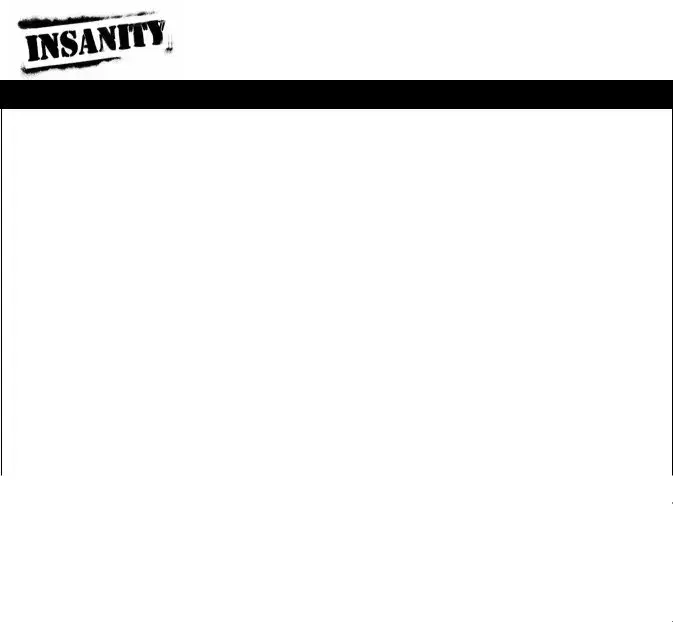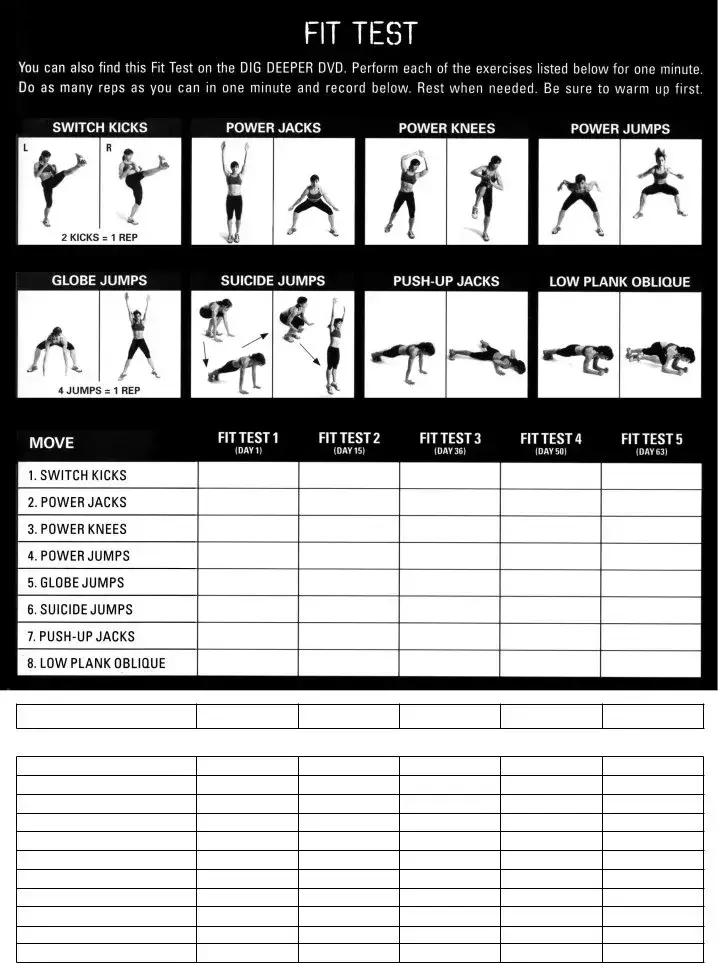What is the purpose of the Workout Calendar form?
The Workout Calendar form is designed to help you track your daily workouts. It provides a clear visual guide for your fitness routine, allowing you to mark off completed workouts with an 'X'. This method encourages accountability and ensures you stay on track with your fitness goals.
How do I use the Workout Calendar?
To use the calendar, simply mark an 'X' on each day that you complete a workout. The calendar is organized by month and includes specific workouts for each day. Following this structure will help you maintain a consistent exercise routine.
What types of workouts are included in the calendar?
The calendar includes various workouts such as Fit Tests, Plyometric Cardio, Core Cardio, and Max Interval training, among others. Different workout types are scheduled throughout the months to ensure a balanced fitness regimen.
Can I modify the workouts listed in the calendar?
You are encouraged to modify workouts to suit your fitness level. Additionally, if you have the Deluxe package, you can replace certain workouts like Cardio Abs with Insane Abs. Adaptations may help you achieve better results based on your personal fitness journey.
What is the significance of rest days?
Rest days are essential for recovery and overall physical health. The calendar includes designated rest days to allow your body to recuperate. Skipping rest days can lead to fatigue or injury, so it’s important to adhere to these designated times.
Is the measurement tracker part of the calendar important?
Yes, the measurement tracker is a valuable tool for monitoring progress. By recording measurements such as weight, body fat percentage, and specific body areas, you can assess changes in your physique over time. This information can motivate you and inform your fitness decisions.
How can I access the Deluxe package features?
The Deluxe package can typically be accessed through a purchase from the provider of the workout program. Upon obtaining it, you will gain additional features and advanced workout options that enhance your training experience.
What should I do if I miss a workout?
If you miss a workout, do not be discouraged. Simply resume your schedule on the following day. If feasible, you may consider making up the missed workout on a rest day. Flexibility in your routine is key to maintaining motivation.
How is the calendar structured over the months?
The calendar is divided into multiple months, each featuring a series of workouts that gradually increase in intensity. This structure helps you build strength and endurance effectively over time. Each month's schedule is laid out daily for your convenience.
What if I have additional questions about the workouts or calendar?
If you have further questions, refer to the official FAQ section on the program's website or consult a fitness professional. They can provide tailored advice based on your specific situation and fitness goals.


